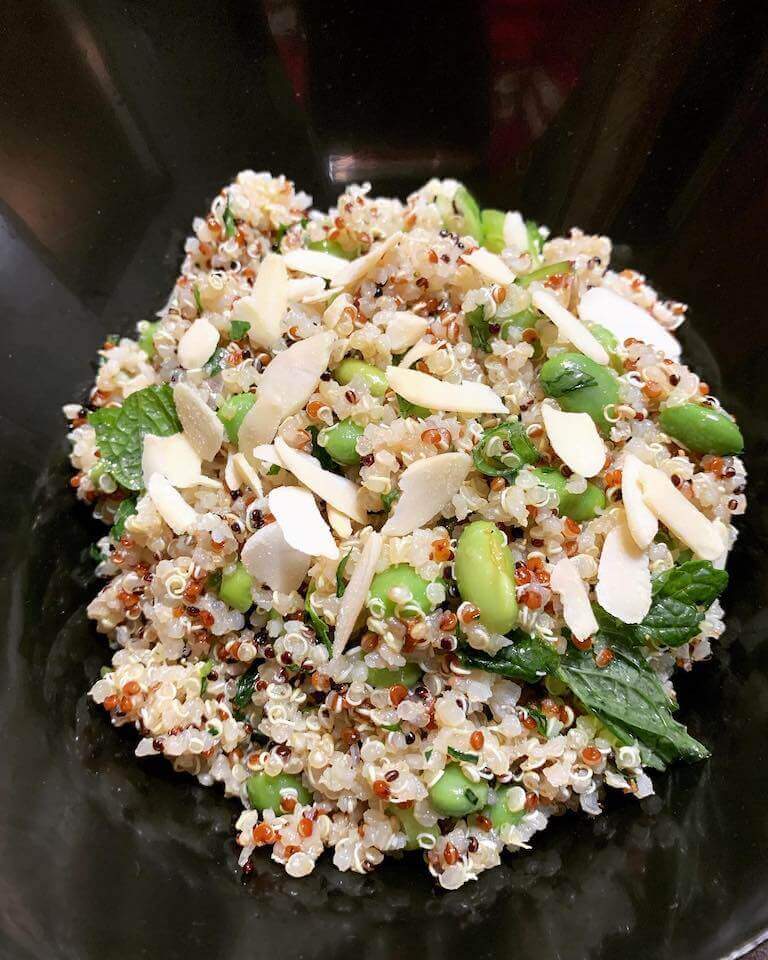To no surprise, vegan food has continued to dramatically surge in popularity over the past decade. In fact, according to Global Retail Performance company Ipsos, there are over 9.7 million plant-based Americans. The vegan food market is worth over $16 billion and expected to hit $22 billion by 2025.
Consumers are increasingly health-conscious, but also more aware of the cost and environmental issues associated with heavy, meat-based diets. As this market proliferates, let’s explore why it’s important to incorporate vegan menu options at restaurants!
The Value Behind Vegan Menu Options
According to The Vegan Society, plant-based food sales increased in 2021 nearly 2.5x faster than in 2018-2020. This marks an impactful shift in restaurant sourcing and consumer demand. Due to this, several restaurant owners today are intuitively listening and responding to the demand for more vegan menu items.
Along with potentially increasing total sales and broadening your consumer base, let’s explore a few reasons why your restaurant might consider offering more vegan-friendly options.
“People are starting to play with the idea that there might be a better way of doing things than just the traditional meat and dairy way of cooking. They’re finding that more and more chefs around the world are playing with plant-based ingredients with more vegetables, and society is accepting it. And that’s the driver for the change.”*
Chef Shane Witters Hicks, Escoffier Boulder Graduate & Private Chef/Educator, The Soulful Spread
It’s More Inclusive
Think about it—when you offer vegan menu options, you might now cater to specific diet restrictions you didn’t address before, which may increase and broaden your consumer base. For example, completely meat-free menu items will likely appeal to ethical eaters. Dairy-free dishes may entice lactose-free guests. Even those who follow religious dietary requirements, such as Seventh-day Adventists, could stroll into your restaurant and opt for vegan items that might tick the boxes.
It Underscores Important Values
When restaurants make a concerted effort to expand into the plant-based niche, it may convey to the vegan consumer that their values and missions are in alignment. Whether it’s taking a stand against animal mistreatment, a concern for climate change, or aiming for better health in general, consumers might feel more inclined to dine at a restaurant that shares the same values.
It Lessens the Demands on Staff
It’s inevitable that many customers will likely request varying dish modifications to comply with any dietary or allergy restrictions. When you offer plant-based dishes that already accommodate some of these concerns, you may lessen the demand on your restaurant staff to modify dishes on a case-by-case basis. At the same time, you might lower the risks of customer complaints—resulting in smoother service all around.
What Are the Differences Between Vegetarian, Vegan, and Plant-Based?
While these three diets often get lumped together, each has a unique definition.
Vegetarian: A diet that includes no meat, but may include animal products like milk and eggs
Vegan: A diet that includes no animal products or by-products, including meat, eggs, dairy, and honey
Plant-Based: A diet that prioritizes plant-based ingredients like vegetables, grains, and nuts; may or may not include animal products
How Restaurants Might Begin to Add Vegan Menu Options
There are several steps restaurants may take to add vegan menu options to ultimately attract more plant-based customers and ignite the mission of becoming a vegan-friendly restaurant.

Quinoa Salad by Plant-Based Culinary Arts Student Kamilah L.
Consider Your Target Audience
Diversifying your menu to incorporate vegan-friendly options may help you appeal to a wider clientele without alienating your non-vegan customers. It’s important to consider your target audience and what their preferences are, then build your vegan offerings around that.
Now, unless your intention is to completely shift to a vegan restaurant, it’s worth keeping non-vegan dishes on the menu. Your goal may be to design a vegan-friendly menu, as opposed to a vegan-only menu. This way, you can keep your existing customer base while opening the door to plant-based eaters. Simply put, as plant-based meat options become more mainstream, restaurants may have a greater incentive to offer dishes that use no animal products in sourcing or preparation.
Craft Your Vegan-Friendly Menu
Creating a vegan-friendly menu takes a little bit of resourcefulness and creativity. You can try to build off existing dishes by utilizing meat substitutes such as tofu, tempeh, seitan, mushrooms, or even jackfruit. But finding cheese replacements may be a little bit more challenging. Looking for dairy-free cheeses may force you to tap into global cuisines for inspiration.
Many East Asian cuisines, for example, such as Chinese, Japanese, Thai, and Vietnamese, rarely use cheese as an ingredient. Other sources of inspiration for dairy-free foods may come from various African cooking traditions, such as West and North African dishes.
If you can’t cook around the milk and cheese, there are plenty of vegan alternatives, such as almond milk and soy-based, vegan cheese substitutes. In today’s world with so many vegan-friendly ingredients, the possibilities are endless!

A delicious plant-based pumpkin soup served as a vegan menu option.
Seek Plant-Based Education
For restaurant owners who desire to introduce more vegan fare to the menu, it might be beneficial to educate restaurant staff about vegan/plant-based dishes and how to source popular plant-based ingredients. This might include a variety of seeds, nuts, fresh veggies, legumes, pasta, and plant-based milk, like oat or coconut. Restaurateurs may also want to consider hiring a specialized vegan chef with credible “plant-based” training.
For instance, students who enroll in Escoffier’s Plant-Based Culinary Arts Program can engage in a well-rounded curriculum that covers concepts such as farm-to-table principles with a concentration on nutritional benefits, sustainability, ethics, and biodiversity. They may also discover the latest, most inclusive plant-based tools, techniques, and ingredients to elevate a plant-based dish, along with menu design, foodservice management, and more.
“This class is awesome, challenging, well set-up, and so thorough! Taking this online course has been the best decision I’ve ever made, and I can see my career path and business foundation forming. I’m so grateful for this program because I really thought a plant-based culinary program was nowhere in my reach!”*
Annalisha Vandeventer, Escoffier Plant-Based online student
By intentionally choosing to onboard a trained vegan chef with a distinct skillset, you might be able to more effectively transform your restaurant’s infrastructure into one that’s more sustainable and vegan-friendly.
Start Exploring Vegan Menu Options
At the end of the day, introducing vegan menu items may turn into your finest culinary creations, all while remaining inclusive and attracting more plant-based consumers. If you’re a restaurant owner or aspiring vegan chef who yearns to discover the ins and outs of plant-based cooking, one way to take those skills to a new level is with a formal education.
Escoffier’s Plant-Based Culinary Arts programs may give you the opportunity to discover the fundamentals of plant-based cooking and broaden your knowledge and skills in the culinary arts. Contact our Admission Department to take the first step towards your goal!
Did you enjoy this article? You might find these interesting, as well.
- A Guide to Culinary School for Vegans and Vegetarians
- What to Know When Opening a Vegetarian or Vegan Restaurant
- So You Want to be a Vegan Chef? Here’s How.
This article was originally published on July 9, 2019, and has since been updated.
*Information may not reflect every student’s experience. Results and outcomes may be based on several factors, such as geographical region or previous experience

 “People are starting to play with the idea that there might be a better way of doing things than just the traditional meat and dairy way of cooking. They’re finding that more and more chefs around the world are playing with plant-based ingredients with more vegetables, and society is accepting it. And that’s the driver for the change.”*
“People are starting to play with the idea that there might be a better way of doing things than just the traditional meat and dairy way of cooking. They’re finding that more and more chefs around the world are playing with plant-based ingredients with more vegetables, and society is accepting it. And that’s the driver for the change.”*

